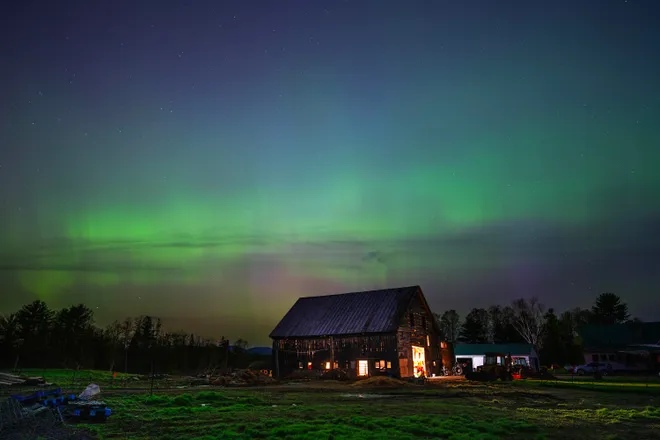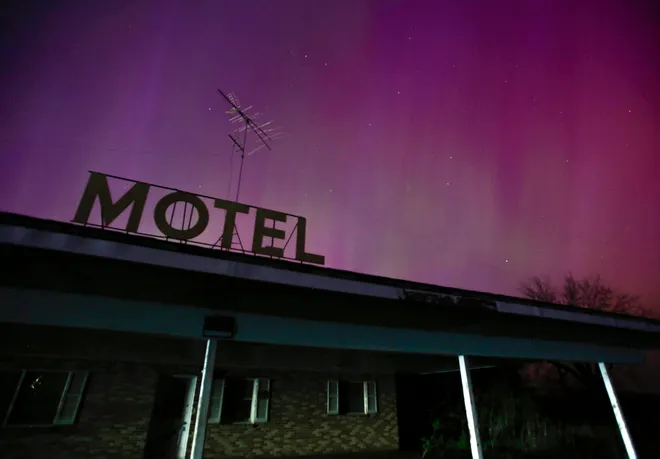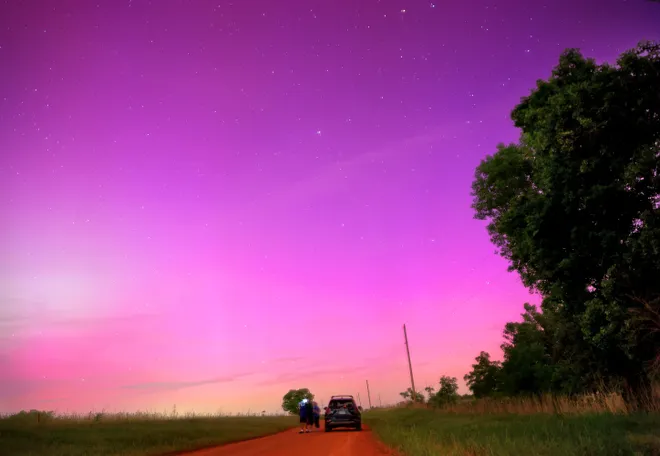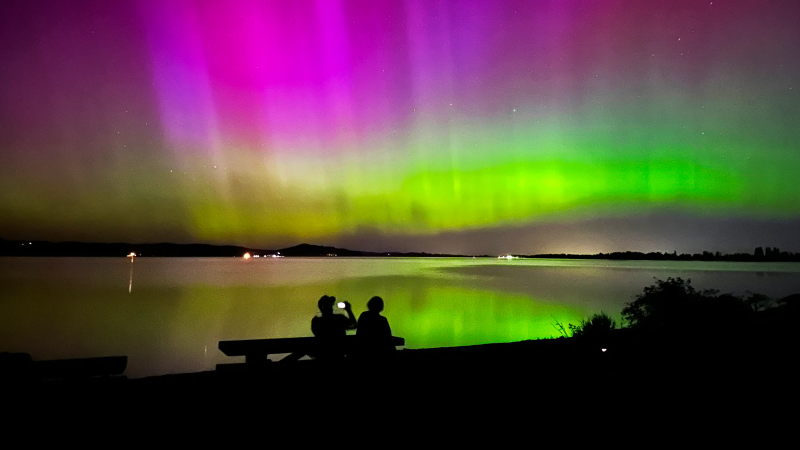Peak northern lights activity coming soon: What to know as sun reaches solar maximum
- The heightened potential for more geomagnetic storms creates an elevated risk for things like disrupted satellite signals, radio communications, internet and electrical power grids.
- The increased solar activity that produces the storms may also give rise to more impressive northern lights displays around the globe.
If it seems like the striking greenish and red hues of the northern lights have surfaced with relative frequency in recent months, there's a reason.
The sun may be nowhere in sight when the dazzling celestial display, also known as the aurora borealis, is lighting up the night sky, but it has a crucial part to play in producing the auroras. For millions of Americans and others across the globe, that became abundantly evident in May when a record powerful solar storm helped create optimal conditions for the auroras to put on a light show for far more spectators than usual.
What's more, as the sun reaches the height of its 11-year cycle, skygazers across the world may only be treated to better and more frequent opportunities to witness the northern lights.
For aurora chasers, those opportunities should continue this year and well into 2025. Here's everything to know about the northern lights and how to see them as the sun reaches its so-called "solar maximum."

Northern lights activity to increase during solar maximum
Electromagnetic activity is increasing as the sun continues to reach the height of its 11-year solar cycle, which NASA said is expected to be in 2025.
As the sun reaches the peak of Solar Cycle 25, sunspots located in regions of intense magnetic activity should increase, according to the National Oceanic and Atmospheric Administration. When that magnetic activity is released, it creates intense bursts of radiation resulting in solar flares – considered by NASA to be our solar system's largest explosive events.
Solar flares emit radiation, mostly in the form of ultraviolet light and X-rays, that can hurtle toward Earth at the speed of light. Some of these flares can be accompanied by coronal mass ejections, or clouds of plasma and charged particles, that emerge from the sun's outermost atmosphere, the corona.
These ejections can collide with Earth’s magnetosphere, the barrier protecting humanity from the harshest impacts of space weather, to produce geomagnetic storms.
Geomagnetic storms can spark northern lights to appear

That may sound scary, and due to the elevated risk for things like disrupted satellite signals, radio communications, internet and electrical power grids, it could be.
But the heightened potential for more geomagnetic storms also may mean more impressive northern lights displays.
In May, a powerful geomagnetic storm was responsible for some reports of power grid irregularities and interference with GPS signals – even farming equipment. On the bright side, it did also unleash spectacular views of the northern lights in parts of the country where auroras are not often visible.
The celestial show came after NOAA issued a rare storm watch for the first time in 19 years for a geomagnetic storm classified as a G4 – a single level away from being the most severe solar storm possible. Amid the solar activity, the sun even emitted an explosive burst of radiation that became the largest solar flare detected since 2017, according to the National Oceanic and Atmospheric Administration.
The phenomenon, which has made several recent appearances across the U.S. was also notably visible again in August during the Perseids, considered among astronomers to be the best meteor shower of the year.
What causes the auroras?
The auroras are a natural light display in Earth's sky that are famously best seen in high-latitude regions of the northern and southern hemispheres.
The phenomenon is caused when electrically-charged particles from space enter Earth's atmosphere and collide with molecules and gasses like oxygen and nitrogen, causing the atmospheric particles to gain energy. To return to their normal state, the particles release that energy in the form of light, according to the University of Alaska at Fairbanks, Geophysical Institute website, which tracks the phenomenon.
As auroras form, Earth's magnetic field redirects the particles toward the poles through a process that produces a stunning display of rays, spirals and flickers that has fascinated humans for millennia. Whether hues of green, red, blue and even pink dance about in the sky is due to altitude in which the collisions occur, as well as the composition and density of the atmosphere at the time.

Where and when can the northern lights be seen?
The solar storms send particles flowing from the sun that get caught up in Earth's magnetic field, causing colorful auroras to form as they interact with molecules of atmospheric gases. In the months ahead, the resulting glowing auroras may be quite a sight to see – if you look up at the right place and time.
The auroras are best seen around the magnetic poles of the northern and southern hemispheres in places like Europe, Asia and North America. In the United States, Alaska is well known to have the best viewing opportunities for the northern lights.
Even though conditions are prime for more impending aurora shows, experts have long struggled to accurately forecast exactly when and where the phenomenon will ever occur. Even the best predictions can only accurately be made a few days or even hours in advance.
NOAA, however, does maintain an aurora dashboard that should help skygazers track the phenomenon.

And if it looks like the northern lights will flare up near you, it's advised to get away from cities and travel to dark locations free from light pollution. If the weather is clear, the best aurora is usually visible within an hour or two of midnight, according to NOAA.
Eric Lagatta covers breaking and trending news for USA TODAY. Reach him at elagatta@gannett.com
Disclaimer: The copyright of this article belongs to the original author. Reposting this article is solely for the purpose of information dissemination and does not constitute any investment advice. If there is any infringement, please contact us immediately. We will make corrections or deletions as necessary. Thank you.





